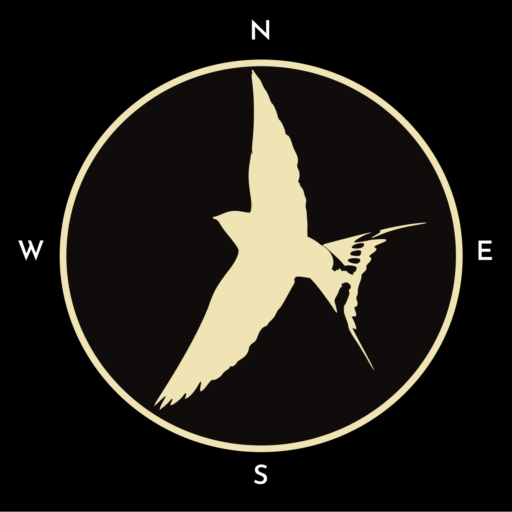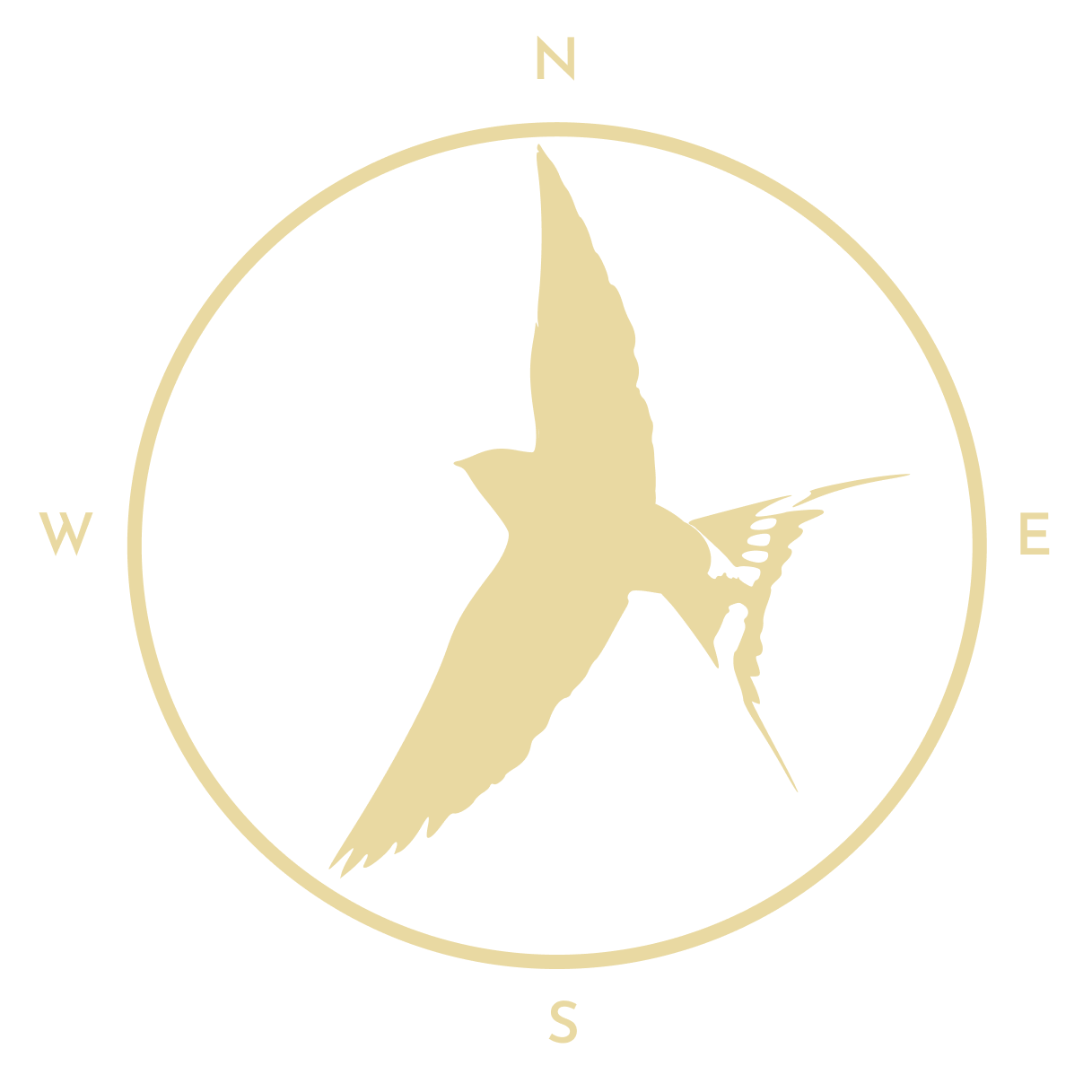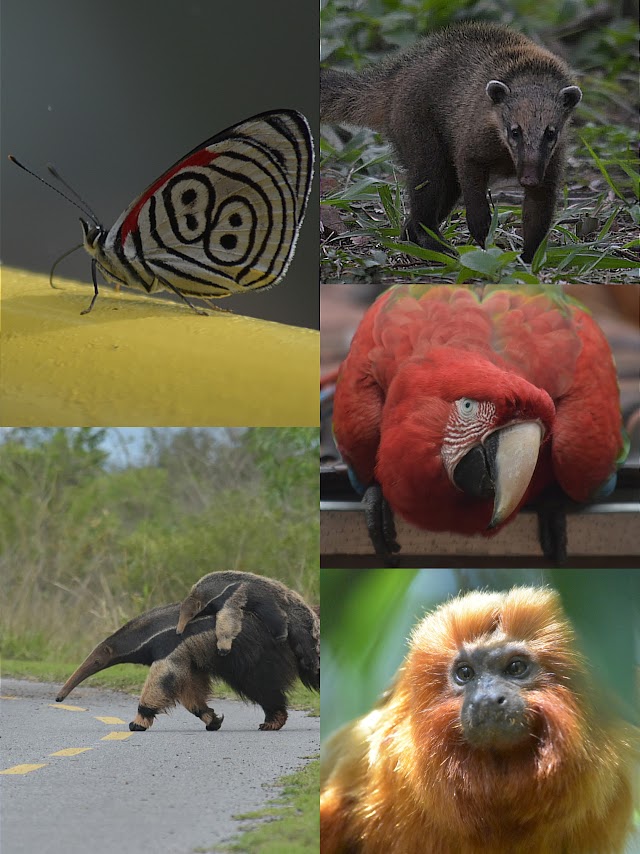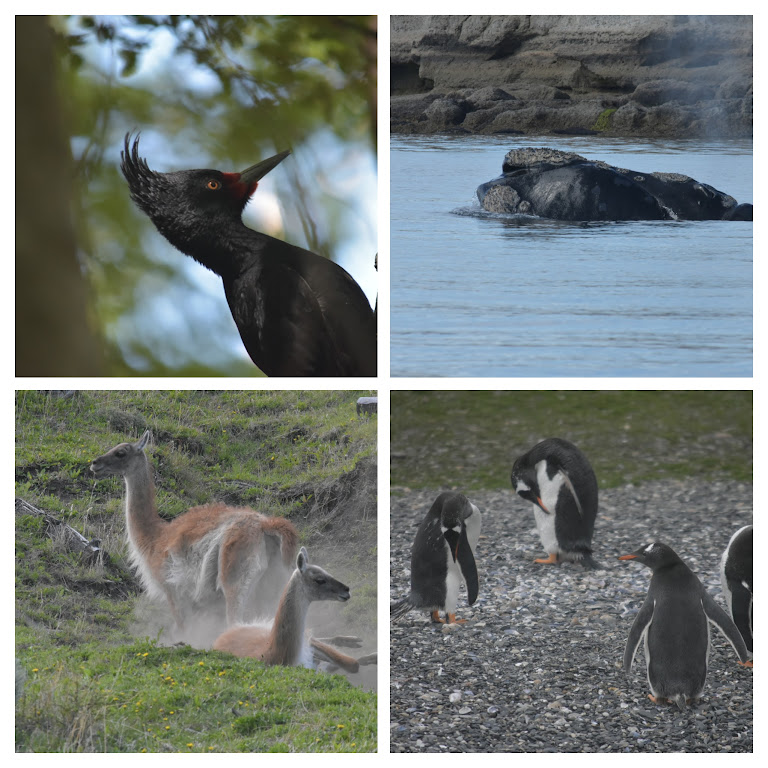

24 animals you can see when visiting Patagonia
Rugged, wild, windswept, the edge of the world… few things hype up lovers of the outdoors and nature like hearing the name “Patagonia”, and it’s not without reason. Patagonia has been taking away the breaths of lovers of the outdoors, from John Muir to Yvon Chouinard, such that it inspired the latter to start up the clothing brand of the same name. And it’s small wonder that the rugged end of the world’s most biologically rich continent wowed naturalists too, from Charles Darwin before he ever set foot on the Galapagos to David Attenborough when shooting some of his best-known documentary scenes.
An introduction to Patagonia and its wildlife
Patagonia is a huge area, and there are four main areas animal lovers will want to pay a visit to when planning their trip in order to get the best of this region’s wildlife, along with a side-dish of gorgeous scenery. These are, going north to south and then north again, Peninsula Valdes, Tierra del Fuego, Torres del Paine and Chiloe. Since they’ve got different climates and landscapes, each one generally has a different collection of animals to offer visitors – though, there are a few that can be found all over Patagonia.
Animals that can be seen (almost) anywhere in Patagonia
Guanaco
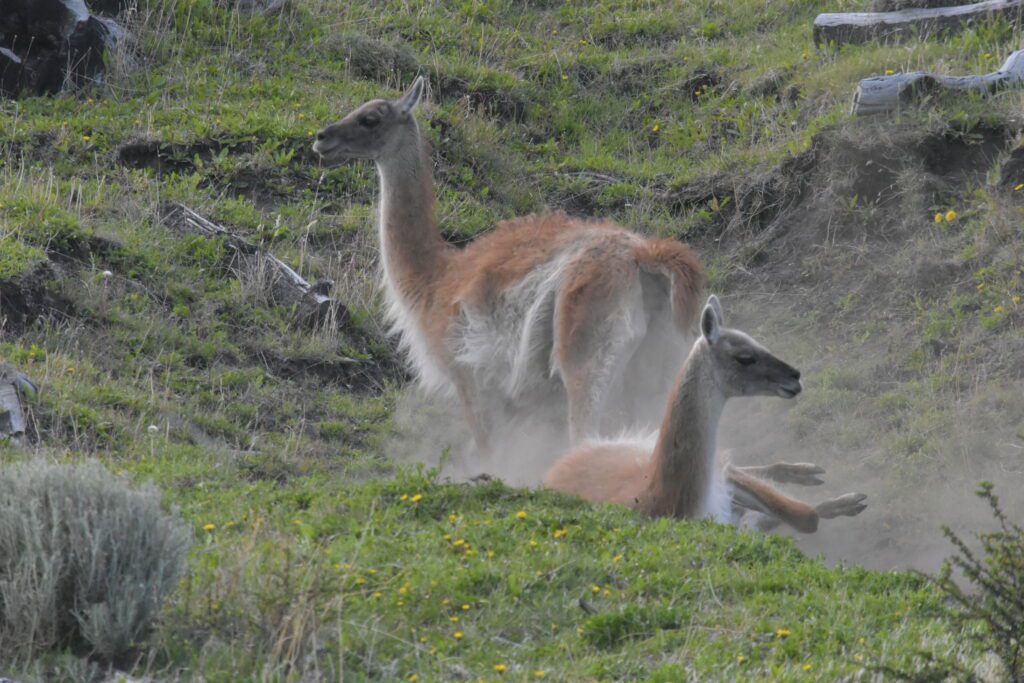

These camelids and wild relatives of the llama are abundant wherever you go. Torres del Paine, for example, has an estimated 13,000 living within its boundaries. Their huge size, social nature and tendency to hang out in open areas mean that they can often be seen when bussing or driving around Patagonia.
Magellanic penguin
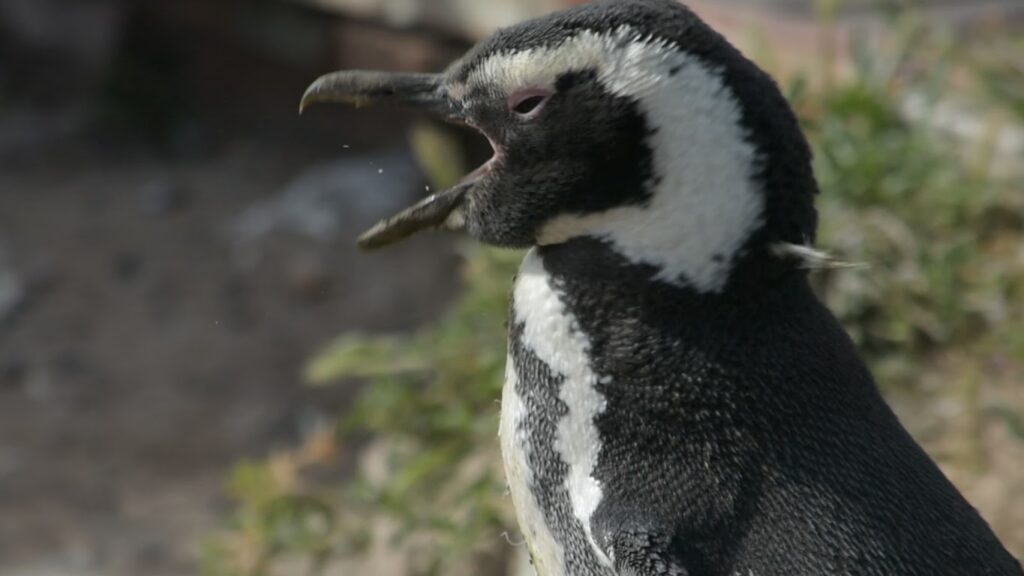

This particular penguin species can be found all along Patagonia’s coastline, and its distribution almost follows Patagonia’s boundaries to a T: its northernmost colony is Peninsula Valdes on the Atlantic side, and Chiloe in the Pacific. And unlike the other penguin species that can be found in Tierra del Fuego, this one doesn’t head off to Antarctica – or at least, not on purpose. In fact, winter is a little cold for this species, so it migrates to the warmer waters of Brazil and northern Chile during these months. This fairweather penguin also makes its nest in a burrow to shield its chicks from the elements.
South American sea lion
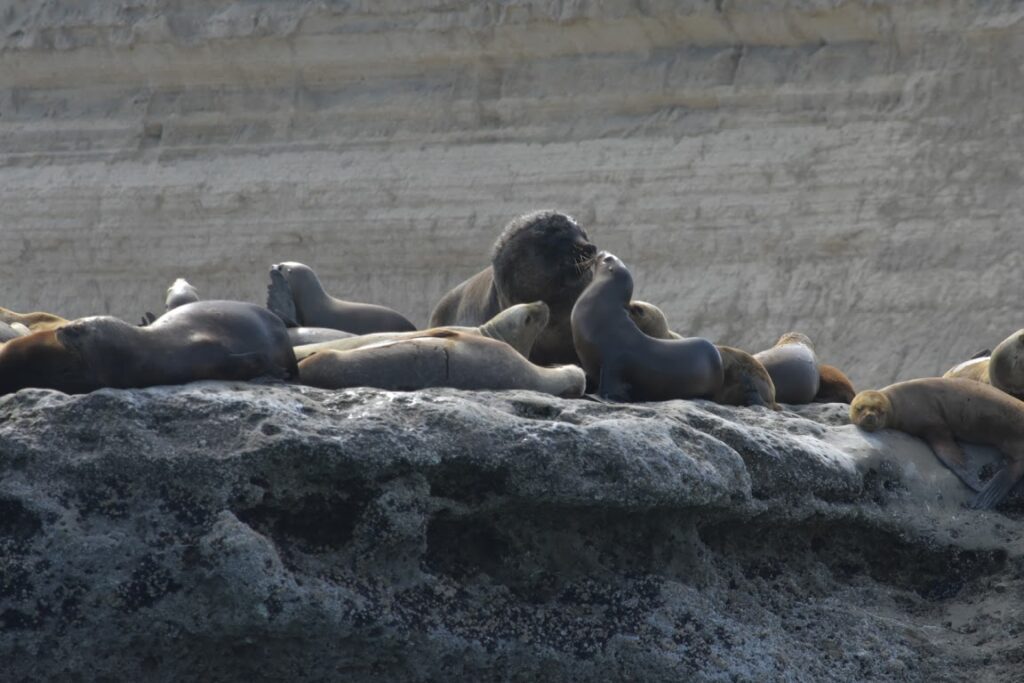

From the docks of Patagonia’s harbours to the ship-wrecking rocks of the Beagle Channel, sea lions can be found resting after a long day of feeding in the fish-rich seas. Unless, of course, they’re fighting one another for space or mates: each group of sea lions is a harem full of females, headed by a dominant male whose daily routine involves seeing off rivals, among other things.
Wildlife in Torres del Paine
The most popular national park in Patagonia for trekkers is also a fine place to get to see some of its best wildlife, given the diversity of habitats present within and around the park. From the steppes in the east to the forests in the north, and the peaks in between, a small collection of Patagonia specialities roam and fly.
Recommended reading: The Confusion-Free Guide to Trekking in Torres del Paine
Pumas
The Lion of the Andes is, without a doubt, the star of Torres del Paine’s wildlife show. In the area to the east of the national park itself is an expanse of steppes and guanacos where the puma population density is twelve times that of the rest of South America. Thanks to this, plus open terrain, pumas are easier to spot here than elsewhere – though, it’s still far from easy. Driving around the public roads at dawn and having a bit of luck often yields at least one or two pumas, while off-road tours with guides and trackers boast a 99% success rate. Don’t try it yourself, though, since this is private land!
Huemul
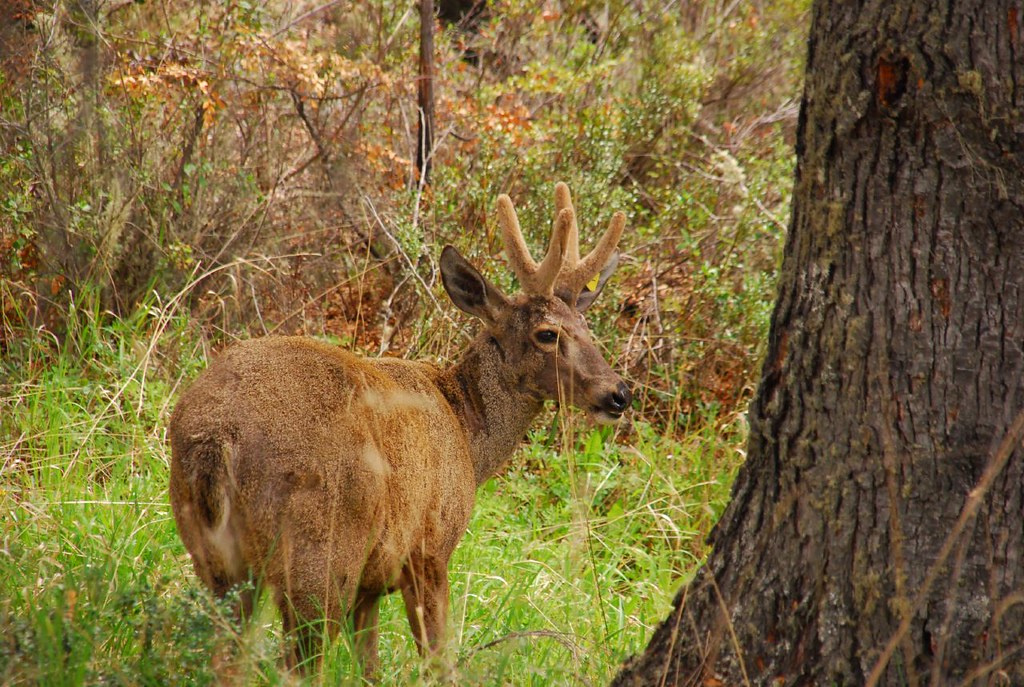

This small deer just so happens to be the national animal of Chile, appearing on its coat of arms alongside the condor. In the flesh they’re a lot harder to find, generally being very rare and shy. A family of four are known to hang around Refugio Grey though, so keep your eyes out in the mornings if you happen to visit – and you will if you’re doing the W or O treks.
Condors


Vultures are seldom associated with grace and beauty, but centuries of indigenous folklore and the fact that people tend to see this bird from afar have made the Andean condor the exception. Torres del Paine is, like much of its wildlife, the southern periphery of its range, and they’re quite abundant here thanks to ample nest sites in the park’s peaks.
Other birds of Torres del Paine
Darwin’s rhea: These ostrich-like birds roam the open plains just outside Torres del Paine, where they use their long legs to keep an eye out for predators. Now that they are no longer hunted by humans, adults have little to worry about, though their eggs and chicks are still vulnerable to pumas and foxes. As a result, they often lay up to 30 eggs.
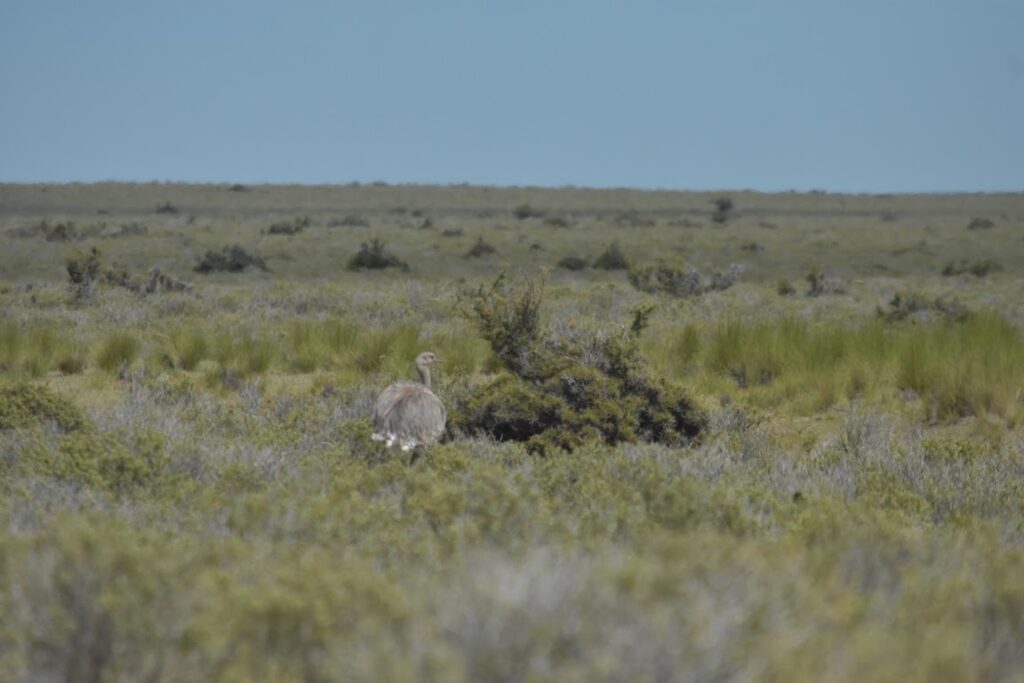

Upland goose: you’ll often find flocks of this species in the open fields and small ponds of Torres del Paine. This is one of the few birds where the males and females, while different, look equally beautiful: the male’s white head and black-edged feathers on its wings make it a beautiful photography subject, while the female with its caramel head and darker body can be best described as “chocolatey”.
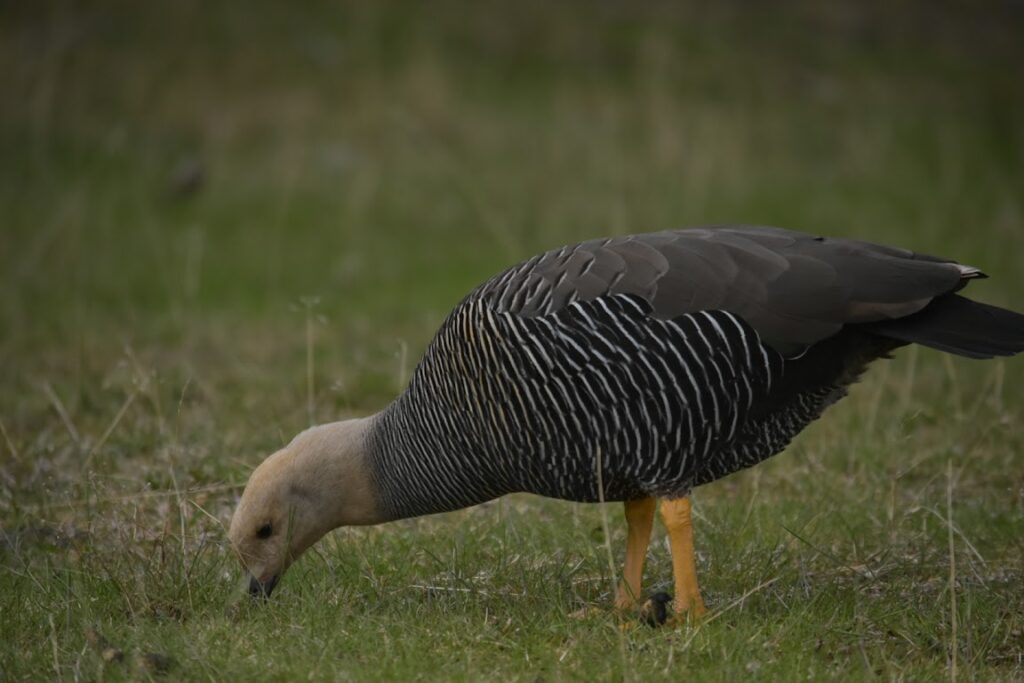

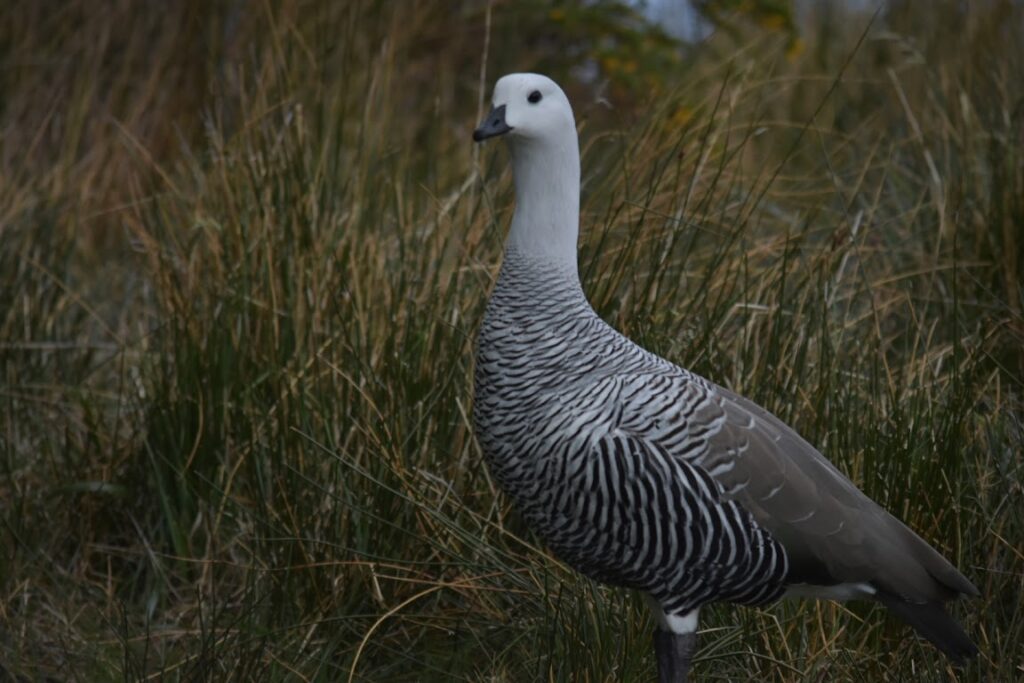

Magellanic woodpecker: this large woodpecker is quite common in the forested areas of Torres del Paine. Even a small, isolated island of trees that had survived the 2011 fires had a couple drilling away into the branches.
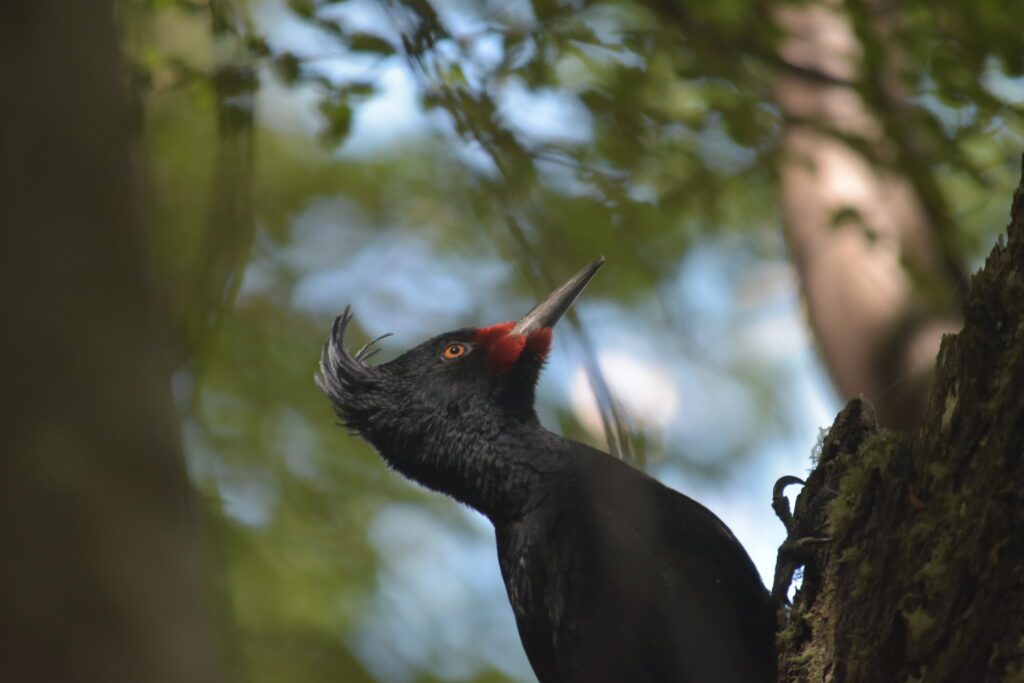

Wildlife in Tierra del Fuego
When early Spanish explorers clapped eyes upon this land at night, they saw the sight of numerous fires in the hills, lit by the indigenous peoples to guard against the chilly Patagonian air. From this, they called it the Land of Fire. The island, split between Chile and Argentina, boasts a number of natural wonders, including the aptly named Tierra del Fuego National Park, Beagle Channel and the world’s northernmost King Penguin colony, as well as two towns that market themselves as the “end of the world”.
Recommended reading: Ushuaia Penguin Tours: Three Species, One Trip
American beaver


While Tierra del Fuego is only the Land of Fire by name, its beavers have certainly subjected it to biological damnation. This isolated population was brought over in 1946 in an attempt to establish a fur trading industry. Not only did this venture fail, but the lack of natural predators meant the beavers proliferated and began to destroy the forests at a rate that would make a Brazilian logger blush. Unlike trees in the beavers’ native Canada, those of Tierra del Fuego don’t regenerate when cut down and take a few centuries to grow. For this reason, the governments of Chile and Argentina have actively worked to eradicate this animal – that doesn’t mean they can’t be seen, though, since there are 200,000 of them around here.
Culpeo
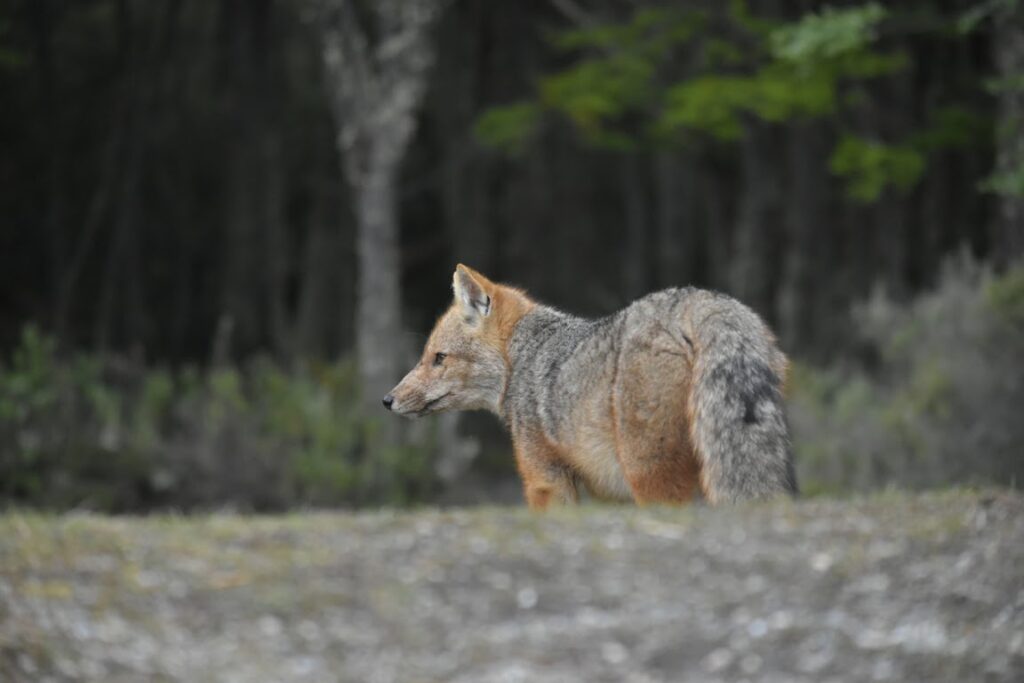

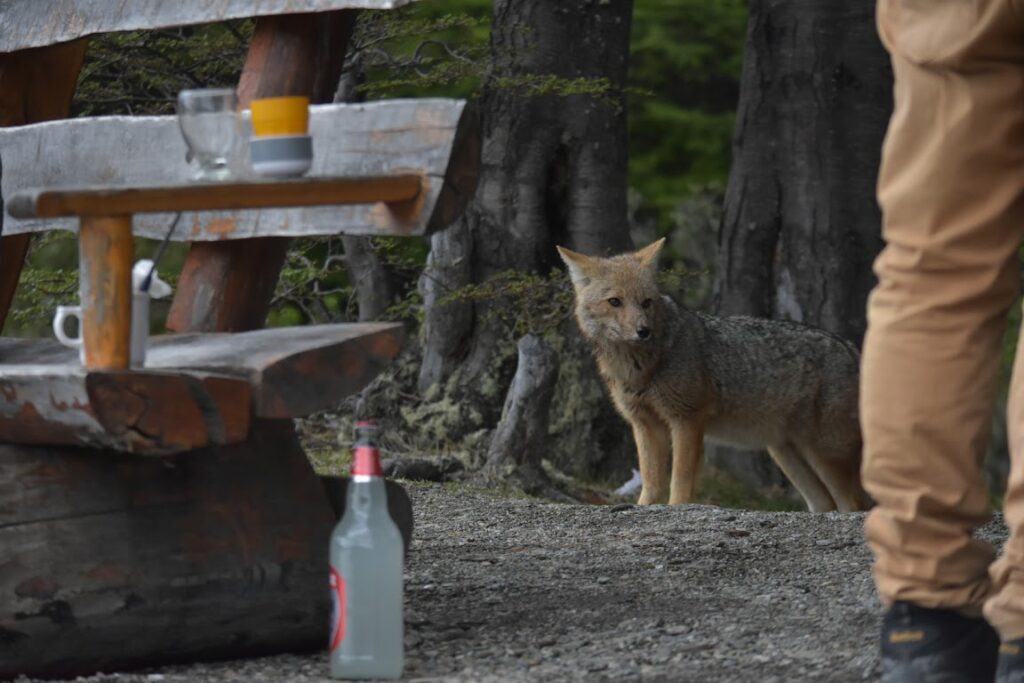

Not quite a fox and not quite a wolf, the culpeo can be found across Patagonia’s steppes and mountains, much to the chagrin of sheep farmers. Visitors to Tierra del Fuego National Park often see them on the paths or hanging around the visitor area, presumably the result of a bit of feeding in the past.
King penguin
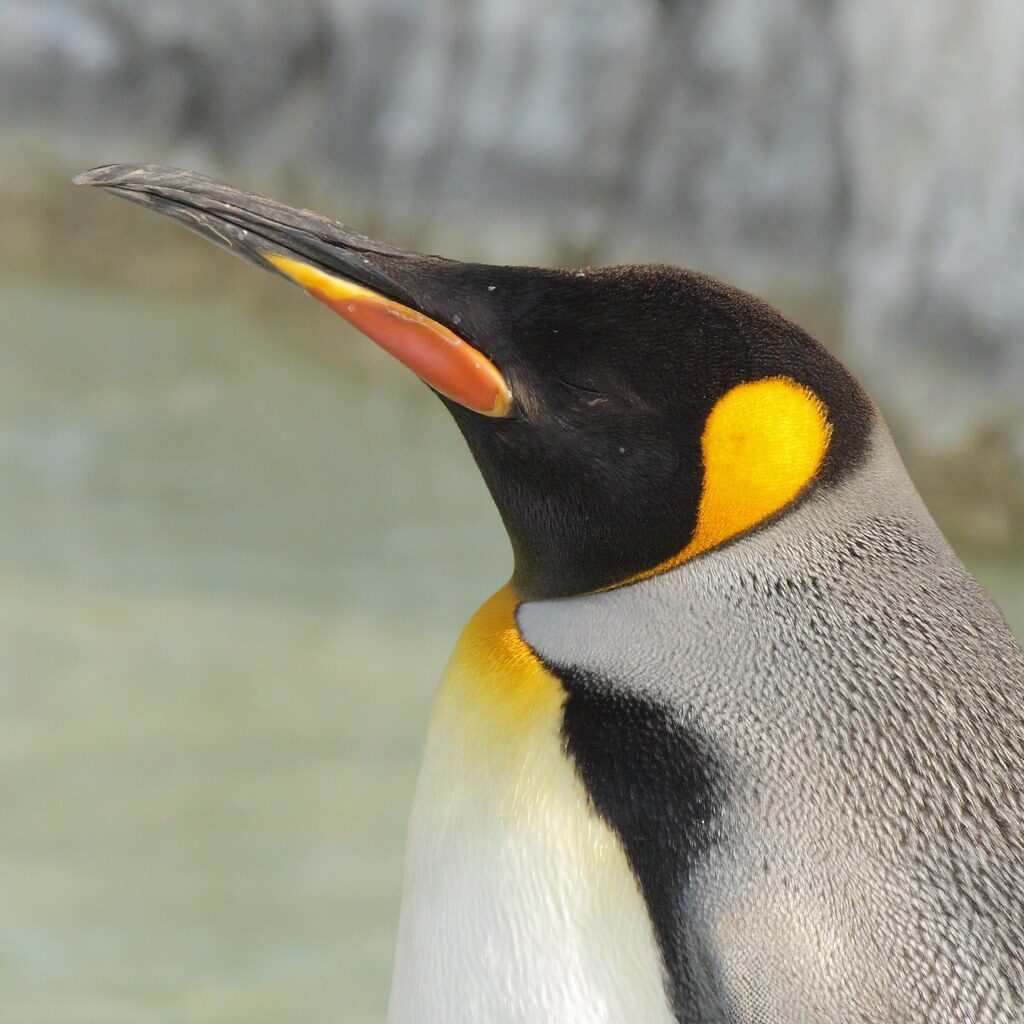

While the second-tallest penguin species is more often associated with Antarctica and the islands of the Atlantic, a small colony exists in Chile’s side of Tierra del Fuego. About half an hour outside of Porvenir, the colony was first established in 2010 when a pair started nesting on this stretch of shore. In the years that followed they, as well as several others, came back for more, and the landowners decided to turn it into a tourist attraction. While this one site forms the backbone of Chilean Tierra del Fuego’s tourism industry, turning it into a penguin Disneyland seems to be the last thing the owners want. Sustainability is key here: visitor numbers are limited and the paths end at a good distance to respect the penguins’ privacy, and the site itself runs on renewable energy. As well as this site, a pair of king penguins have often made an appearance near Ushuaia, and it is thought that they may be looking to establish a colony here too.
Gentoo penguin
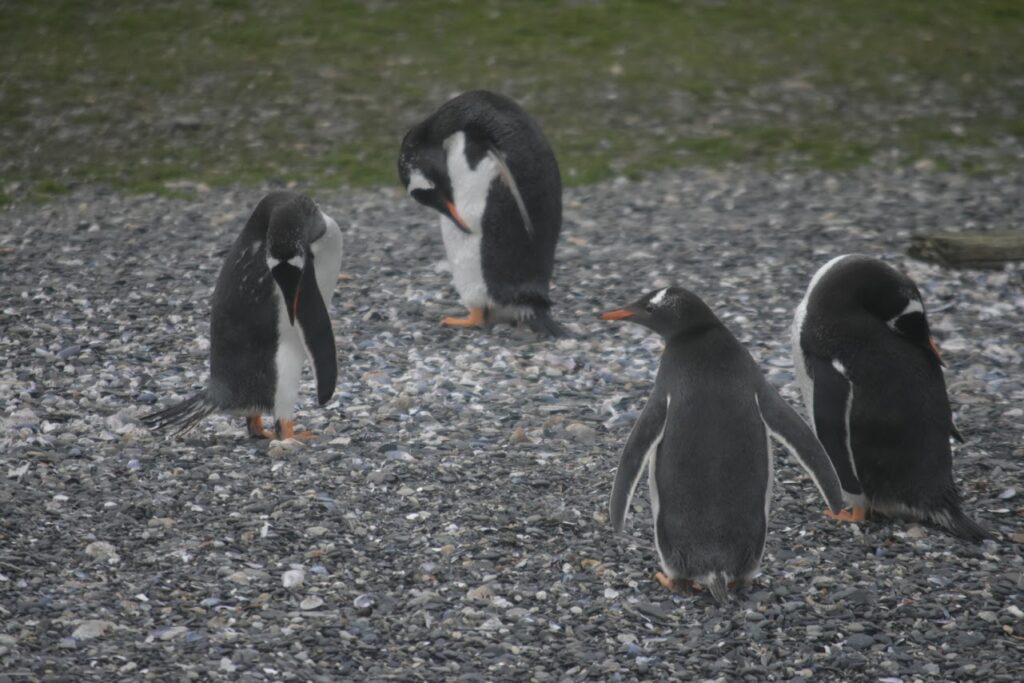

Another Antarctic specialist, this species of penguin has a small colony on Isla Martillo near Ushuaia. Like the king penguins, they’re a relatively new arrival: the first individuals are believed to have gone astray from the Falkland Islands. Visiting this island by boat will give you views of them on the beach and in the water below as they come and go, with them leaping out of the water as they reach the beach. Sometimes they land on their feet and at other times they take a tumble, but it’s a good show either way. There’s also a special walking tour that will bring you right up to them and their nests.
Black-browed albatross
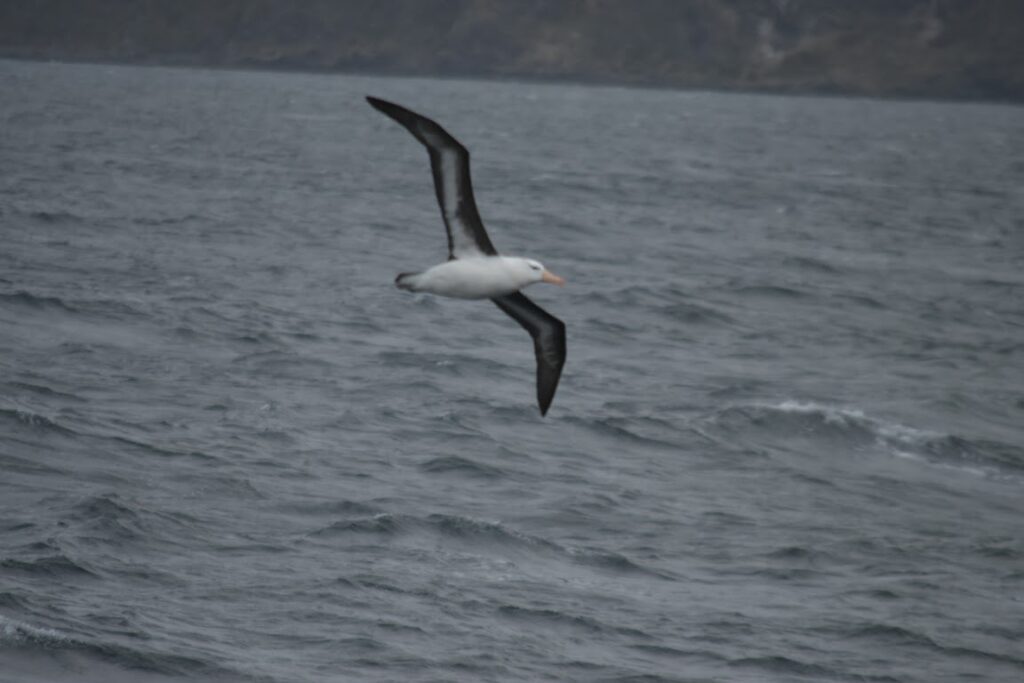

These gull-like birds are built for ocean faring – their huge wingspan and the region’s infamous winds enable them to soar for miles, and they can often be seen dodging the towering waves without the slightest hint of effort. The best ways to see this bird are by taking boat trips to Isla Martillo from Ushuaia or the ferry from Punta Arenas to Porvenir, since both will take you into the albatross’ open ocean habitat.
Wildlife in Peninsula Valdes (and the rest of coastal Argentina)
Argentina’s coast is a bit more off the beaten track compared to the Andes since the scenery here is (if I’m being honest) pretty dull – the flat miles of dusty scrublands are a far cry from the Patagonia people imagine. Continuing the theme of honesty, Peninsula Valdes is the only part of it that you really need to visit, offering a one-stop shop of all the area’s animals as well as a few unique treasures of its own.
Recommended reading: Peninsula Valdes and Puerto Piramides – A Backpacker’s Guide
Southern right whale
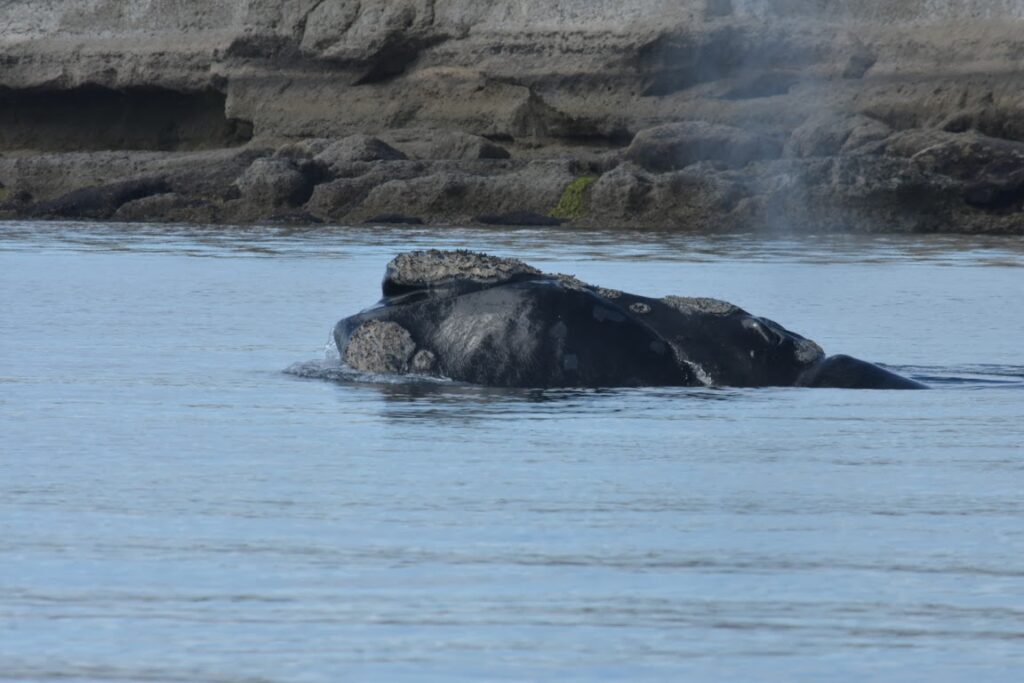

These 15 metre long gentle giants used to be known for lingering about at the surface, approaching the coast and approaching boats with the curiosity of a cat. Unfortunately, since these were whaling boats, that curiosity often killed it too. Whalers describing it as the “right” whale to hunt subsequently gave it its name. Happily, a ban on whaling in the 1970s brought this species’ numbers back from extinction, and nowadays a third of this species’ global population come to give birth in the bays around Peninsula Valdes. From land they can be seen surfacing every few minutes, and boat trips frequently have them surfacing mere metres away – despite the whaling, they’re still as curious as ever, much to the delight of tourists.
Orca
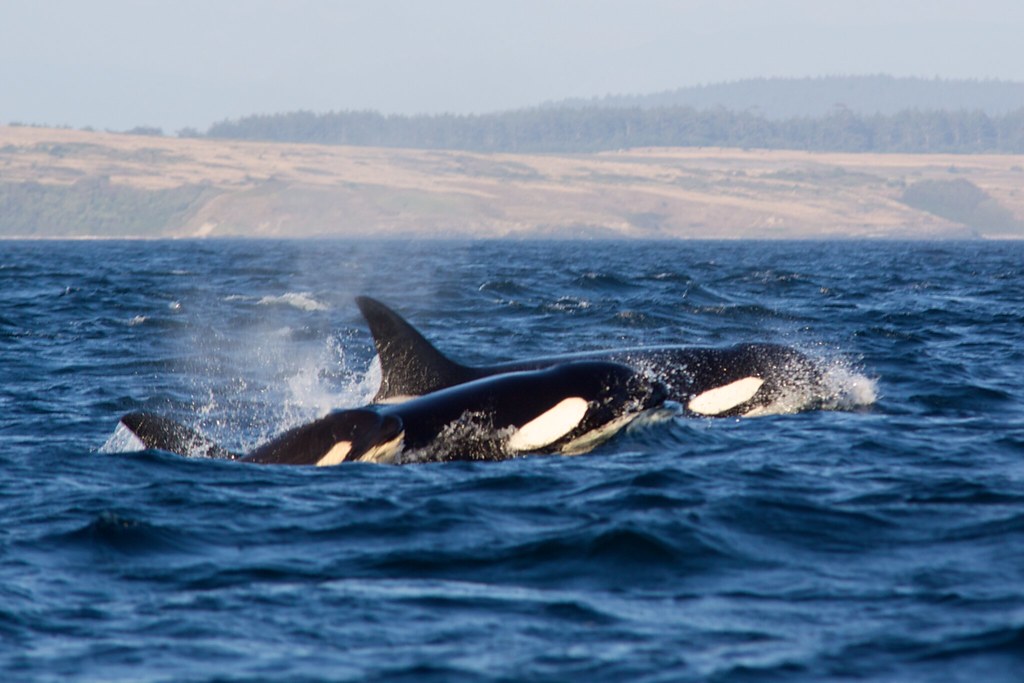

Also known as the killer whale, pods of these giant dolphins (yes, the “whale” part of their name isn’t zoologically correct) patrol the coastline of Peninsula Valdes, looking for unsuspecting sea lions and elephant seals to snap up. If you’re very lucky and visit at the right time, you might see them catching their prey on land – with a running start, they launch themselves out of the water and thrash their body to get back in.
Mara
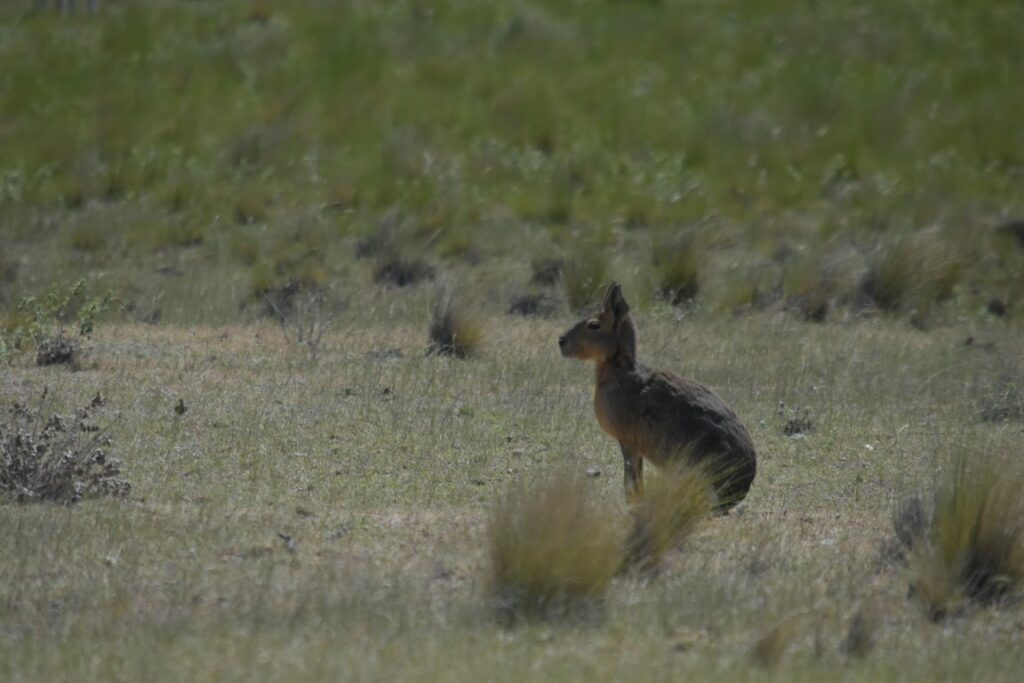

Southern right whales and land orcas tend to top many peoples’ lists when visiting Peninsula Valdes, and a solid number three should be these extraordinary rodents. While they’re closely related to guinea pigs, you wouldn’t have guessed it when you see their long, deer-like legs. When alarmed it uses these to run fast and run far. Mara can typically be found in areas where the peninsula’s omnipresent shrubs are lacking – there’s a family by the junction near Puerto Piramides where several football fields’ worth of grassland lie.
Elephant seal
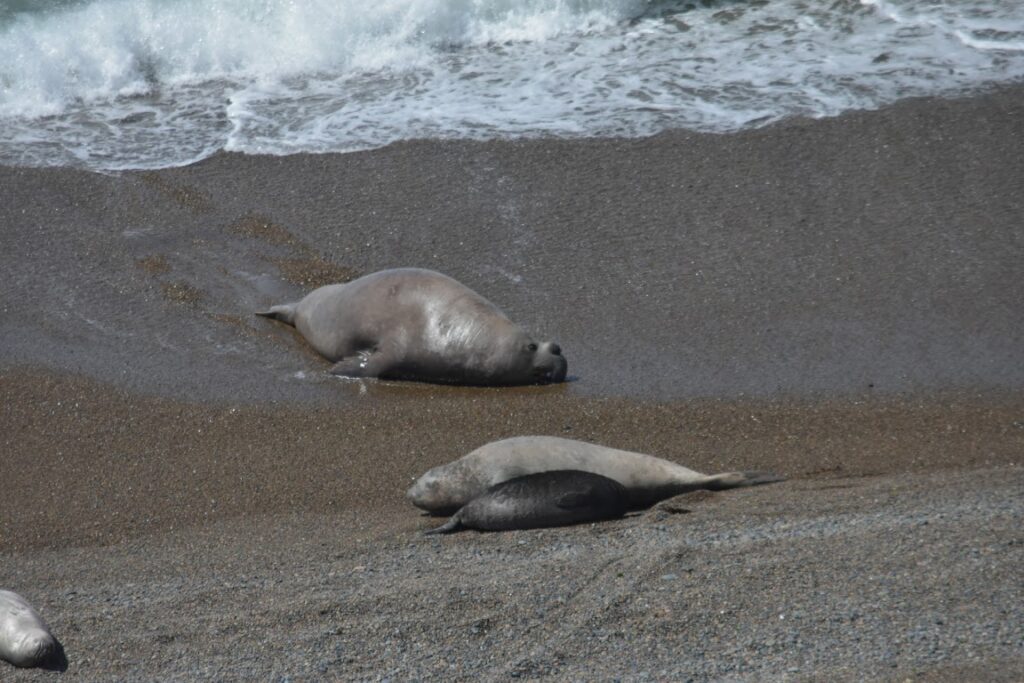

The females and pups of this animal look like what you’d expect from a seal: a squash ball of blubber with a friendly face. Males, on the other hand, are a completely different story. They weigh up to 4500 pounds, the same as most rhino species, and have a trunk-like nose from which the species gets its name. Beneath that nose is a mouth full of fangs with which the anything-but-gentle giants use to fight rival males. Like sea lions, males guard a harem full of females, and the winner takes it all.
Skunk
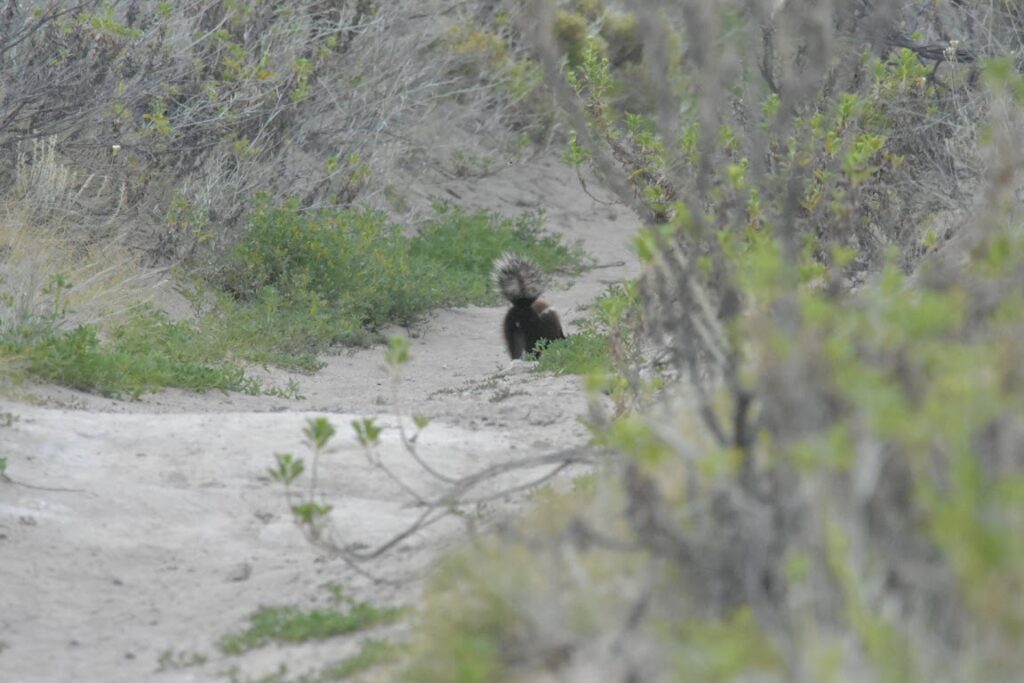

Patagonian hog nosed skunks, the local species, look a little different to their North American counsins, with a toffee-brown stripe complimenting the black and white. Like any skunk, though, they will flash their tails upwards when they feel threatened, and unleash a powerful cloud of their musty odour if they need to. Many live in the hills above Puerto Piramides, and it’s not uncommon to see them while driving around the peninsula’s roads either. Make sure to keep your distance, but generally speaking, they do their best to avoid humans.
Large hairy armadillo
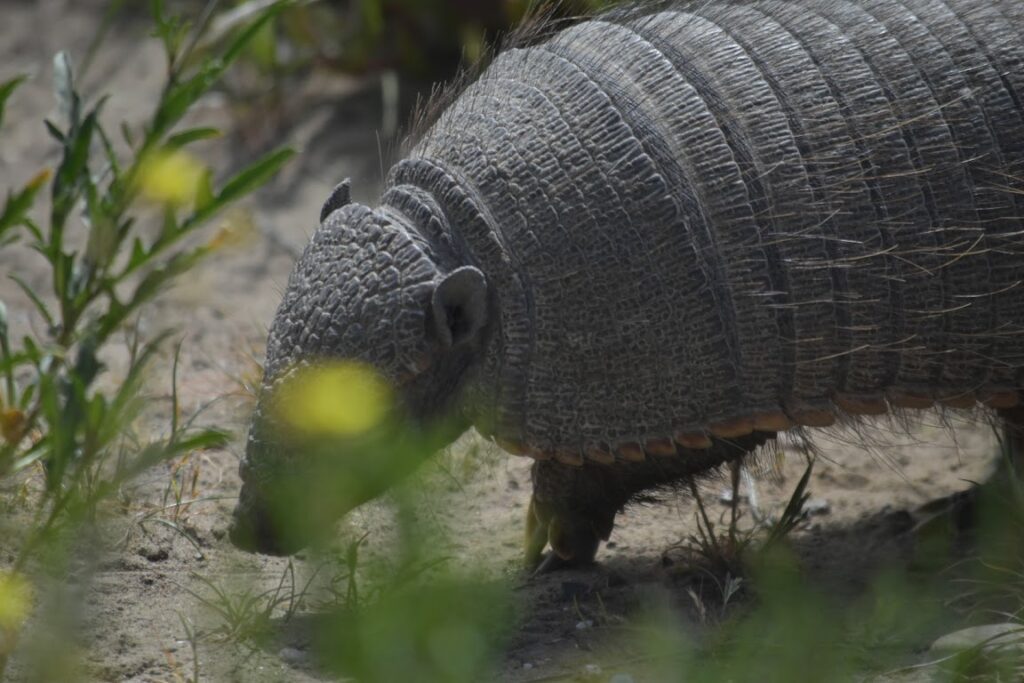

With clusters of hair poking through their armour plating, this small animal is well suited for the cold nights that come with life this far south. Individuals can be seen hanging around the visitor area of Caleta Valdes – indeed, I saw one just as I was reading a sign about it. Another ran across the path in front of me as I was walking to a nearby viewpoint, and it was hard to tell which one of us was more alarmed.
Wildlife of Chiloe and the Lakes District
The northern reaches of Chilean Patagonia aren’t as popular as Tierra del Fuego or Torres del Paine, but definitely no less scenic. It’s still far south enough that the Andean peaks are often snowcapped even in the height of summer, and this region is called the Lakes District for a reason. Mossy rainforests coat the misty peaks of the Lakes District and the rolling hills of Chiloe, the result of 300 annual days of rain. Within this botanical clutter live some very unique animals, and the seas are just as rich around here as they are in all of Patagonia.
Southern Pudu
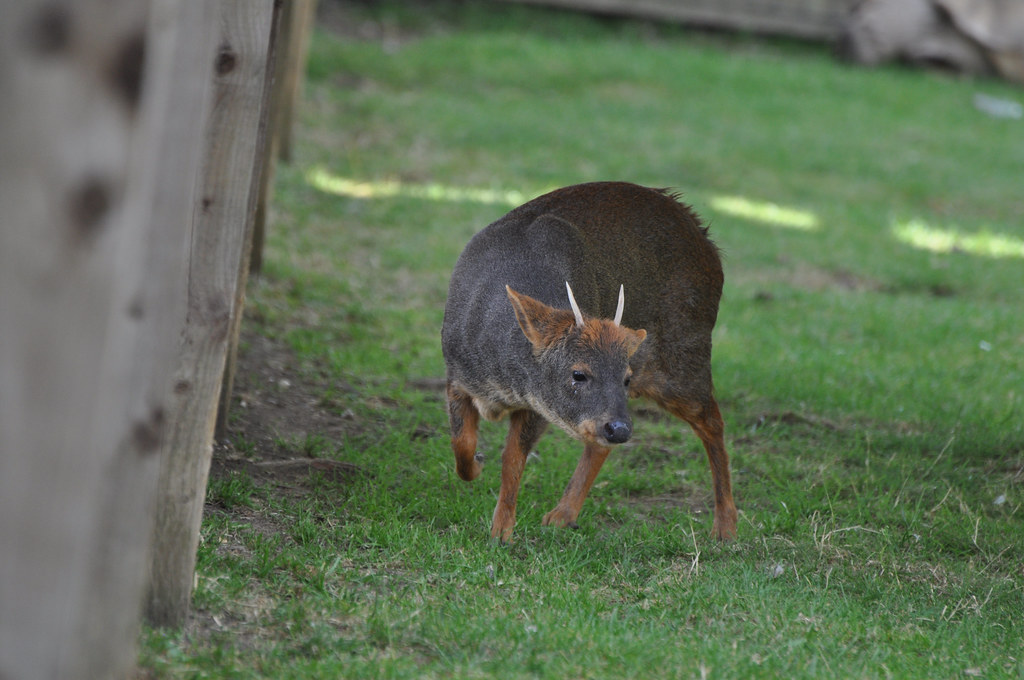

At the size of a terrier, this animal is the second-smallest species of deer in the world, second only to the northern pudu. It’s not hard to see why this species has proliferated in Chiloe’s forests when one wanders down their trails: the dense vegetation provides ample hiding places from predators, and pudus often have a network of trails and tunnels to make full use of it. Despite their secretive nature, they can sometimes be seen hanging about roadsides in Chiloe – Parque Tepehueico is a good place to look for them since the extensive network of trails and roads make for more spotting opportunities. Visitor numbers here are also at the sweet spot: enough that pudus lose their fear of humans, but not so many that noise scares them off.
Kodkod
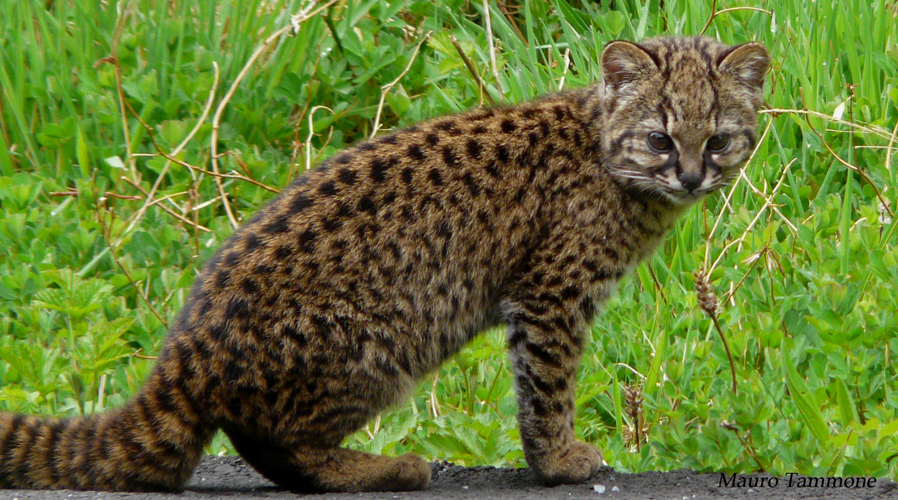

This tiny wildcat is a master of hunting in the forests of Chiloe and the Lakes District, using its spotted fur to blend in with the dim undergrowth and its small size to stalk birds through the canopy. Most kodkods are brown with spots all over, but melanistic (panther-like) individuals are not uncommon either. It would take some luck to spot this cat when visiting Chiloe, though it isn’t completely nocturnal, sometimes hunting during the day.
Darwin’s fox
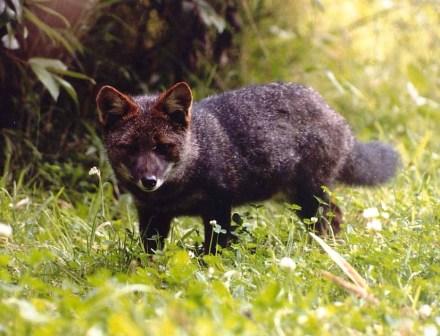

Victorian zoologists generally needed a rifle and some marksmanship to collect specimens, but when a grey fox approached the crew of the Beagle, Charles Darwin only needed a little stealth and a hammer. Unfortunate ending for the fox aside, when it was identified as a separate species, it was named after the naturalist for this reason.
As with the kodkod, this fox is tiny. Darwin’s foxes will either be really easy to see on Chiloe or nigh on impossible – similarly tame individuals have been often seen by visitors to Chiloe, including a pair that used to hang out around the Tantauco National Park ranger’s office. Emphasis on used to: it would appear that they no longer make an appearance. Reading reports on mammalwatching.com or getting local advice is your best bet: a couple told me they’d had one feeding outside their tent one night in Chepu.
Darwin’s frog
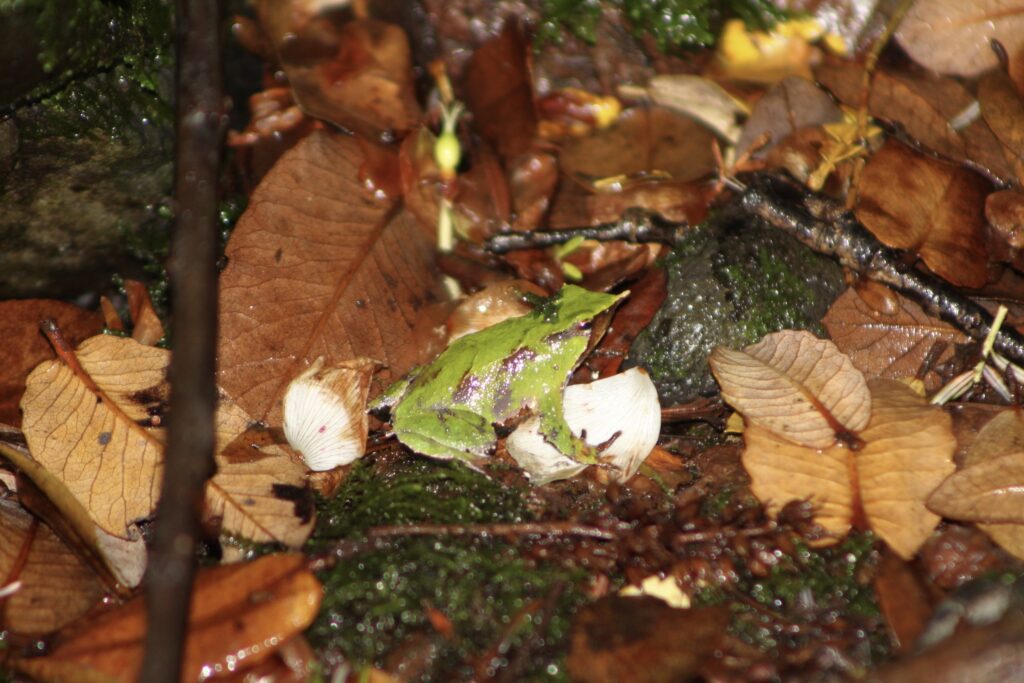

Another discovery of Charles Darwin’s that bears his name, the Darwin’s frog is unique for its pointy snout, as well as the fact that the male rears tadpoles within his vocal sac (the flexible skin beneath its mouth that would usually be used for calling). He’ll keep an eye on the eggs until they hatch, then seemingly gobble them up and rear them within his mouth until they themselves become frogs. Another unusual, though much more unusual fact about this frog, is that its numbers are in steep decline, but not due to humans – this time, the culprit has been a fungus, and one that is suspected to have already driven another Darwin’s frog species to extinction.
While these frogs are rare and small, pools in open areas offer the best bet for spotting them. Futangue Park, north of Puerto Montt, is a good place to look since it has a specific trail dedicated to these little amphibians. You’ll need to reserve a guide ahead of your visit, but it’s for the animals’ welfare and will also maximise your chances of seeing them.
Chucao Tapaculo
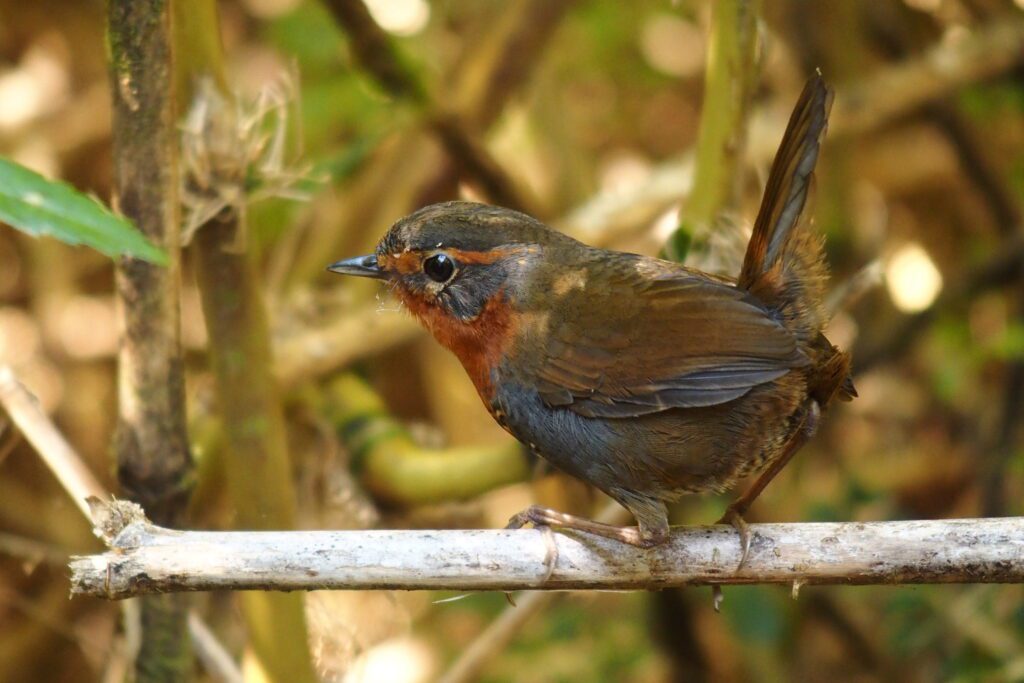

This tennis-ball sized bird looks a little like a plump robin, with an orange breast and a tendency to scurry through the undergrowth rather than fly. Its call is quite unique though, and local superstition says that if one hears it to their right they will have good luck. And, the inverse is true of the left. Since I often heard them on both sides, I can probably conclude that life will have its ups and downs as it always has.
You’ll likely hear this bird all over Chiloe, though I found Parque Tepehueico the best place for sightings since it offers more of the bird’s favourite habitat. Wandering the trails yielded a tapaculo walking right in front of me, and another sighting of a couple playing/ fighting further on.
Humboldt’s Penguin


Chiloe forms the southern tip of this species’ range, though its numbers here increased in the wake of the 1982 El Nino event – in short, oceans around Peru warmed to the extent that fish migrated to the cooler oceans to the south, with the penguins following them. Islas Punihuil hosts the biggest colony, and this is also one of the very few colonies that contain both this species and Magellanic penguins.
Blue whale
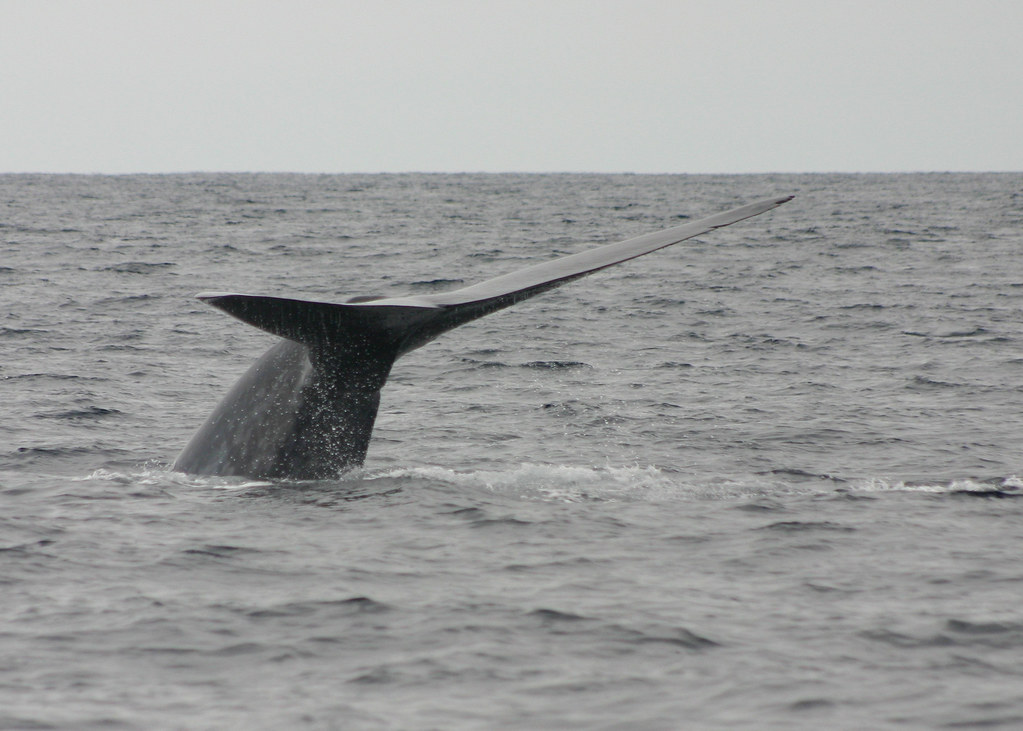

The world’s largest animal has many a fun fact to be said about it, usually related to the size of its body parts: its tongue weighs more than an elephant, its heart is the size of a car and blue whale calves have the fastest growth rate of any animal, with a billion-fold increase in size during the first 18 months of its life. For a narrow window of time (January-February) Chiloe becomes one of the more reliable places to spot these giant animals, when calm seas mean that vantage points near Punihuil often turn them up. There are also agencies that offer whale watching trips if you’d like to get closer to them. Ask around in Ancud for recommendations.
Photo credits
“King Penguin” by Guwashi999 is licensed under CC BY 2.0.
“Huemul” by magical-world is licensed under CC BY-SA 2.0.
“Condor Valley” by Matito is licensed under CC BY-SA 2.0.
“Orca Family” by DrTH80 is licensed under CC BY 2.0.
“Pudu Deer” by Harlequeen is licensed under CC BY 2.0.
Kodkod. (2022, October 18). In Wikipedia. https://en.wikipedia.org/wiki/Kodkod
“Ranita de Darwin (Rhinoderma darwinii)” by Jalmonacida is licensed under CC BY-SA 4.0.
“File:Scelorchilus rubecula.JPG” by Haplochromis is licensed under CC BY-SA 3.0.
“Blue whale tail deep dive” by Seabass London is licensed under CC BY 2.0.

